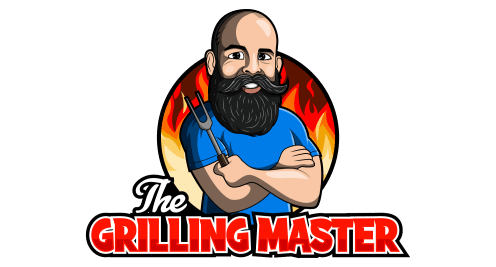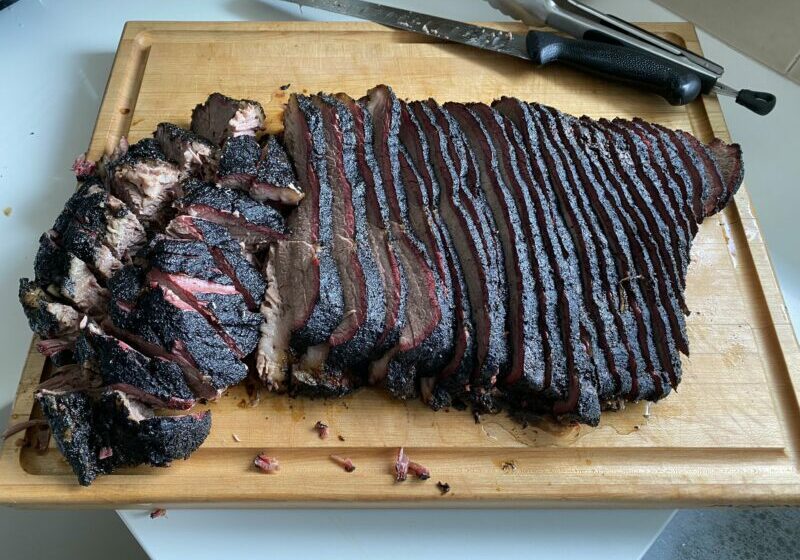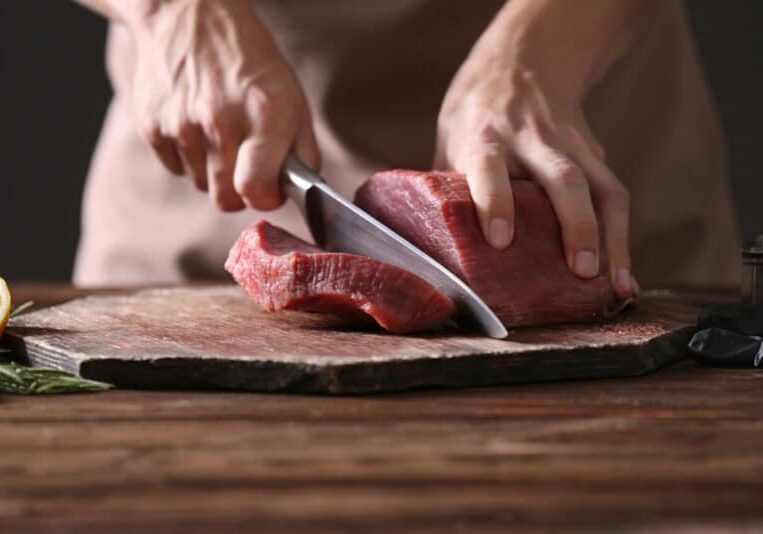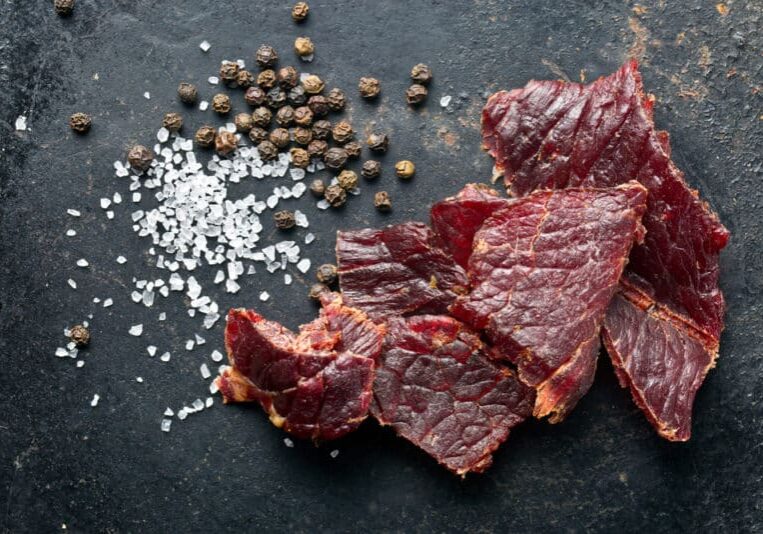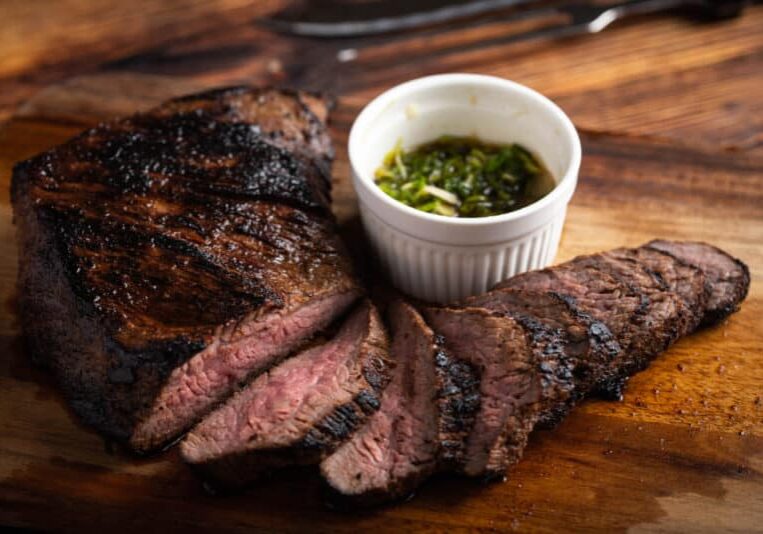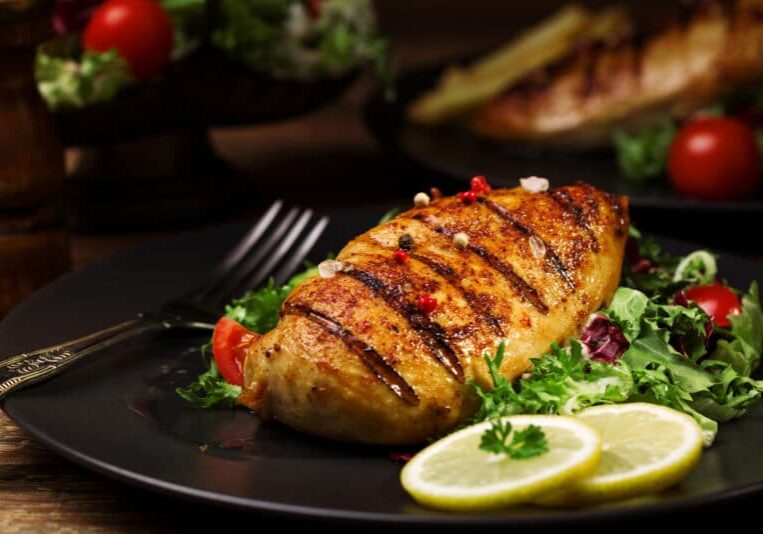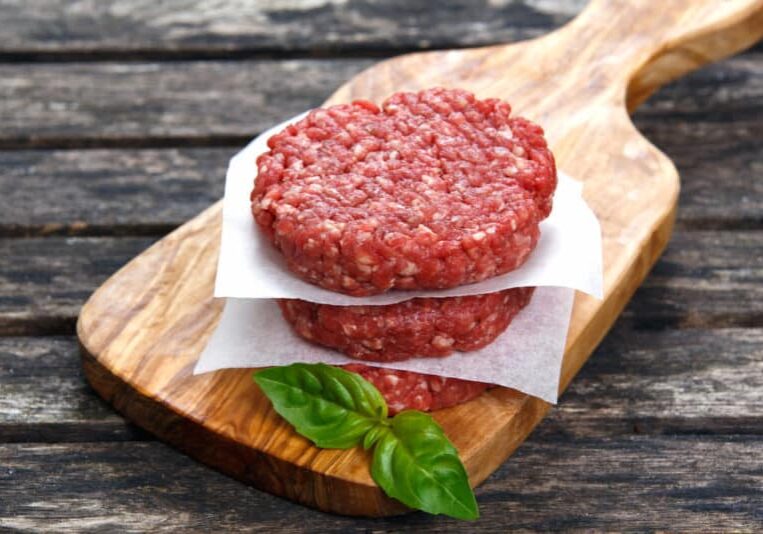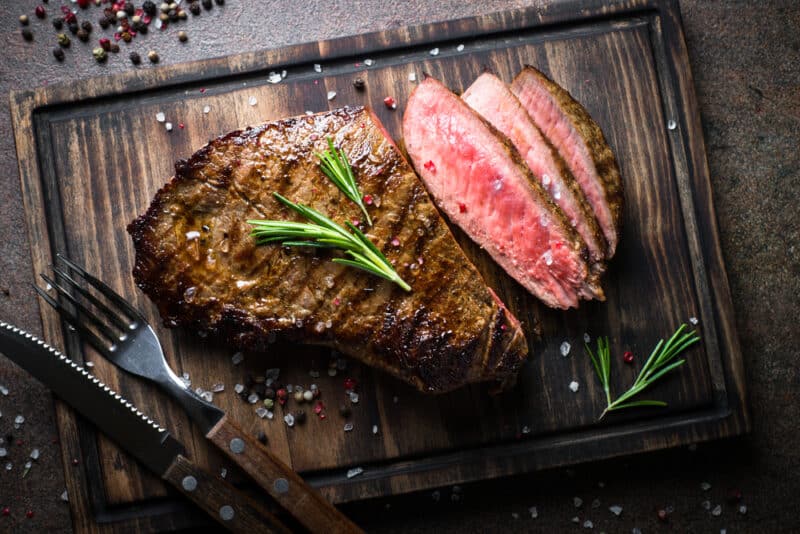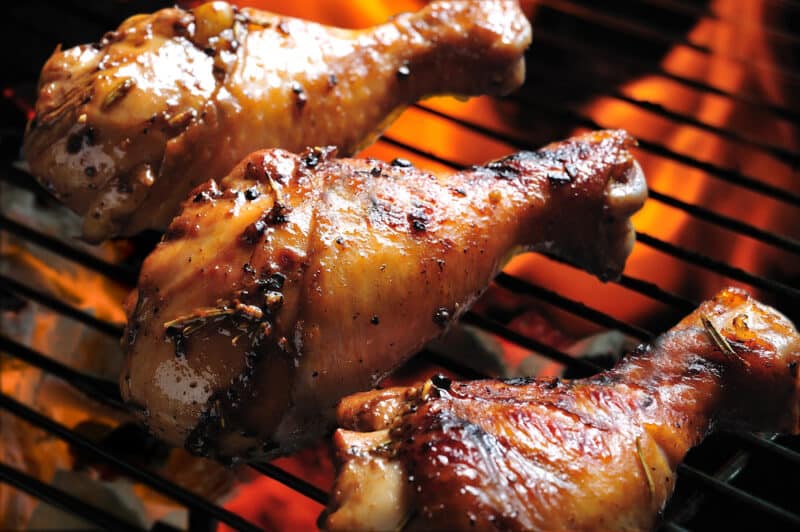Brisket Flat vs. Point Cuts
TheGrillingMaster.com is reader-supported. If you buy something using the links on our site, we might earn an affiliate commission at no added cost to you. This helps us pay our staff to keep making awesome content for you!
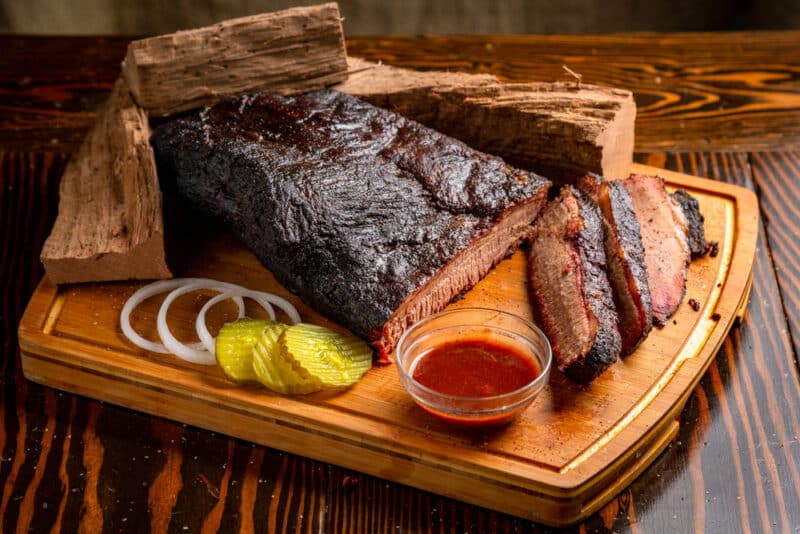
Comparing brisket flat vs. point is necessary to ensure you use the best part for the chosen cooking process. It is hard to find smoked meat that can beat the utter deliciousness of brisket.
There is something about brisket that everyone can easily fall in love with, from its crunchy bark to its soft, tender, and juicy inside.
Understanding Beef Brisket
Let’s break down what a brisket is.
It’s a cut of meat taken from the chest section of a cow. These muscles do a lot of work to support the cow’s weight when it is standing, making brisket a dense cut with lots of connective tissue.
This is why it needs to be cooked over a long period of time with low heat to break down the connective tissues and turn it into the delicious dish we all love.
Now, let’s dig into the differences between the flat and point cut of brisket. This is helpful to know when you want to make hot-and-fast brisket.
What are Brisket Point and Flat Cut?
The entire brisket cut is often called a whole packer brisket as it’s a large cut of meat made up of two muscles.
These muscles are separated into two sections – the brisket flat and the brisket point.
The flat is leaner and the point has a thick layer of fat which makes it the more flavorful option.
People sometimes mistakenly call the point cut the ‘deckle’, but the deckle is actually just a term used for the fat cap on top of the point cut.
Related reading: Easy brisket taco recipe
How to Tell the Flat and Point of the Brisket Apart
The obvious differences in size and fat content make identifying the two parts easy. However, those are not the only differences.
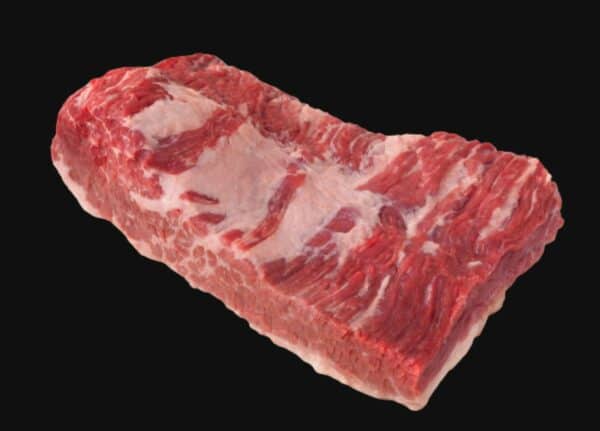
Brisket Point
1. Size Difference
You’ll notice that the flat cut of the brisket is bigger than the point cut.
Flat cut is also pretty much the same thickness all the way through, while the point end has thicker and thinner parts. That means it can be harder to get the point cut cooked evenly.
2. Fat Content Difference
The brisket flat has enough marbling in it, the point has a lot more fat, called the fat cap.
This helps keep the meat moist when cooked.
However, if both cuts are cooked at a low temperature over a long period of time, the fat content difference won’t be a major issue.
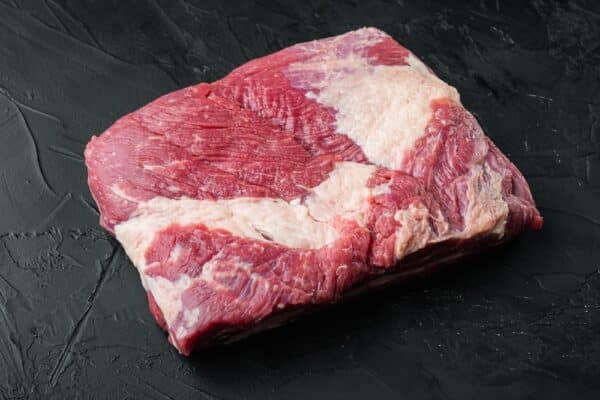
Brisket Flat
3. Difference in Flavor
The point cut has a stronger beefy flavor than the flat because it has more fat, which provides more flavor.
The point doesn’t need as much seasoning, but the flat can get more flavor with the right spices. Even though the flat can be spiced up, it still won’t have the same buttery texture as the point.
4. Which Part is Easier to Prepare?
When discussing how to cook brisket flat and brisket point, they are both typically smoked, but can also be braised or slow-roasted.
Which technique is simpler to cook is up to the cook and their individual cooking skills.
Let’s deal with them one at a time, starting with the point.
What are the Uses of Brisket Point?
The higher fat content of the brisket point makes it more suitable for shredding than slicing, as pulled brisket point provides a more enjoyable texture when eaten.
However, slicing it is still possible and can be used to create Burnt Ends, a popular dish.
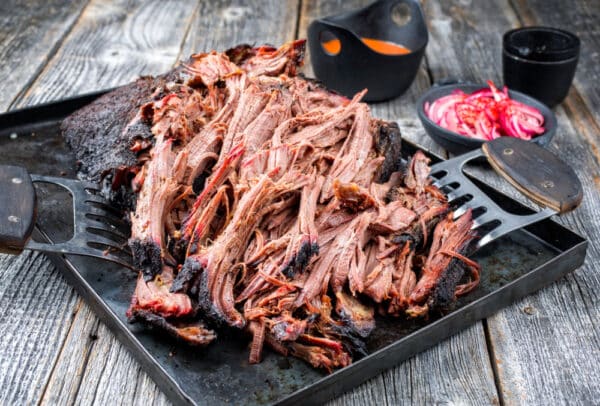
Pulled Brisket Point
Preparing the Brisket Point
- The brisket point is usually either shredded or made into Burnt Ends, so there’s no need to cut away any extra fat since it will add to the flavor.
- Most people prefer to use a dry rub to season the point, as it helps to create a flavorful crust.
How to Smoke a Brisket Point
- Cook the brisket point slowly at a low temperature, such as 225°F to 275°F.
- This will help break down the fat and connective tissues, resulting in a tender finish.
- Wrapping the brisket point can help avoid the ‘stall’.
- Keep cooking until the internal temperature reaches 195°F.
How Do You Make Brisket Burnt Ends
- To make burnt ends, complete the same steps as for smoking the brisket point, but take the brisket off the smoker when it is almost done.
- Cut it into cubes and coat it with sauce before putting it back in the smoker to complete cooking.
- The sauce will caramelize, creating an amazing taste sensation.
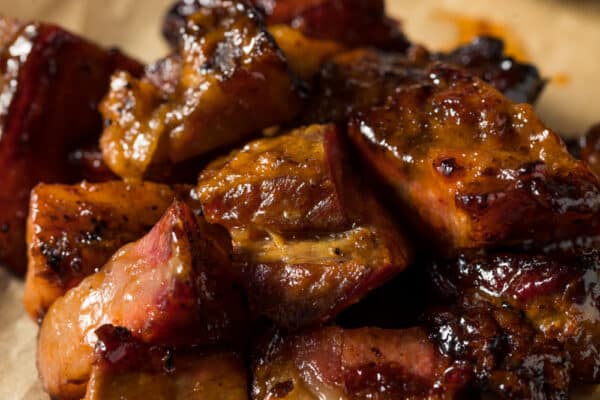
Brisket Point – Burnt Ends
Related Reading >> The Benefits of Spritzing Brisket
What are the Uses of Brisket Flat?
The flat’s shape and size make this an ideal cut for slicing, so it is commonly used as a kind of deli meat
However, the brisket flat also makes a delicious braised joint or smoked BBQ dish.
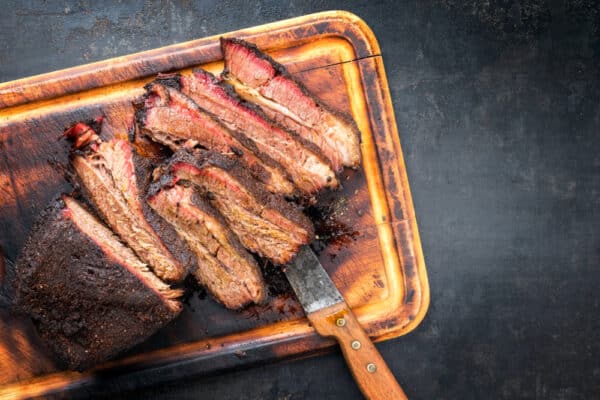
Sliced Brisket Flat
How to Prepare Brisket Flat
When it comes to trimming a brisket flat, there is not much to do since it is usually already butchered and trimmed by your butcher.
You may choose to remove any remaining fat, but it should be noted that the marbling will help keep the meat from drying out during cooking.
However, it is essential to take off any silver skin as this will make the meat tough if it is left on.
Because the fat content of brisket flat is low you will have to add seasonings to enhance the flavor.
Depending on what you intend to do with your brisket flat, the flavoring you choose will vary.
- If you want to make corned beef or pastrami, you should brine it.
- If you are going to braise or roast your brisket, you could opt for a marinade.
- If you are aiming for a low and slow cook, a dry rub would be best for creating a delicious bark.
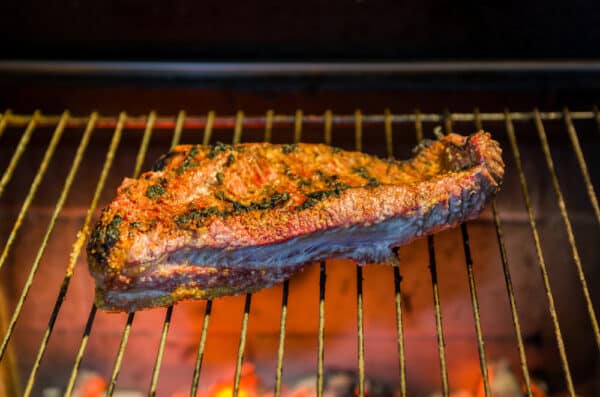
Brisket BBQ
How to Smoke Brisket Flat
Smoking a brisket flat can take quite a while, but it is worth the effort because the alchemy of low-and-slow smoking could almost be intoxicating.
- Begin by setting the temperature at a low 225°F to 275°F, and keep cooking until the internal temperature of the brisket is 195°F.
- Wrap the brisket with the Texas Crutch method in foil or butcher’s paper to prevent it from drying out or becoming stuck in the ‘Stall’.
- Doing this will help to ensure that your brisket remains juicy.
Other Cooking Methods for Brisket
1. Braising
For braising, the flat cut is the optimal choice since it will be cooked with a generous amount of liquid which will make the meat tender and juicy.
- Start by browning it on high heat in a stove-top pan, then transfer it to a large pot.
- Include a flavorful liquid such as canned tomatoes, broth, or wine, and cook the brisket over low heat for 3 to 4 hours.
- Once cooked, you can shred the meat and use it in sandwiches as you would with pulled pork.
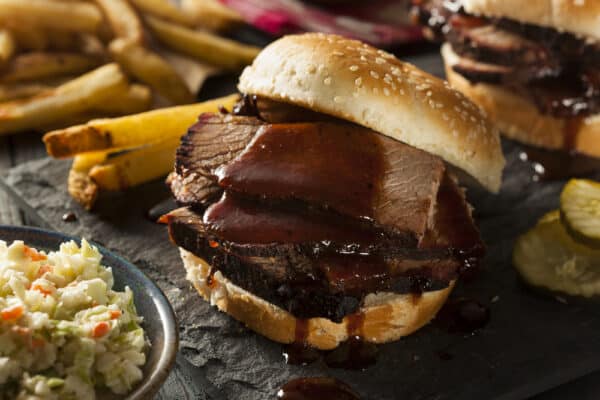
Brisket Flat Slices Sandwich
2. Slow Cooking
This method has many similarities to braising, mainly in terms of extended cooking time. Unlike braising, however, it requires minimal attention.
- Start by browning the meat either in the slow cooker or in a separate pan.
- Place the brisket inside, the fat side up if you use the point, and add either a braising liquid or marinade like barbecue sauce.
- You can also season the meat with various spices.
- Finally, set the slow cooker to its lowest setting and let it cook for the desired amount of time.
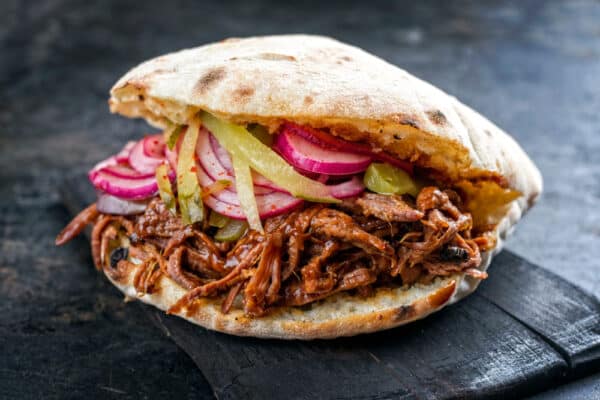
Brisket Pulled Point Sandwich
How to Separate Brisket Point and Flat
If you’ve purchased a ‘Packer’s’ cut of brisket, you should divide the point and the flat before you begin cooking to maximize the flavor of both parts.
Although it may take some experience to become skilled at separating the parts of the brisket, these easy steps and a sharp knife will help you get the job done quickly.
1. Identify the Cuts
Begin by laying the brisket on your workspace with the fatty side down.
- In the cow, the flat portion will be resting against the ribs, with the point section at the top of the leg.
- You will be able to detect a seam of fat where the two pieces meet, which is known as the nose.
2. Cut down the ‘Nose’
To separate the two cuts, use a sharp knife and cut into the fat seam.
- Gently lift the flat with your other hand to get a better view of the seam as you go, and follow it along as it curves back underneath.
- When you get to the point where the seam starts to taper out, you will have two distinct pieces of meat.
3. Trim it Up
- Cut the fat seam as close as possible, then trim and remove any excess fat remaining on both cuts.
In a Nutshell
In conclusion, both brisket flat and brisket point are great cuts of beef for barbecuing, smoking, braising, and slow cooking.
The main difference between the two is that brisket flat is leaner and more uniform in shape than brisket point, which has more fat and marbling.
While brisket flat is easier to cook and carve, brisket point is more flavorful due to its higher fat content.
Ultimately, it is up to the cook to decide which cut is best for their meal.
Frequently Asked Questions
Q: Which is more tender, point cut or flat cut?
A: The brisket point is the more tender section of the whole beef brisket. It contains a bit more internal marbling than the flat, making it juicier when cooked.
Q: Which is better, flat or point brisket?
A: There is no right or wrong answer; it depends on personal preference. If you prefer slices of brisket, then the flat is for you. It is very easy to cut uniform slices due to the flat’s shape and lean texture. Moreover, the meat isn’t overly fatty and tastes great. For those who enjoy shredded meat for sandwiches, hamburgers, or BBQ, this point is for you.
Q: What cooks faster brisket point or flat?
A: The point cooks faster than the flat. Since the flat is a leaner cut of meat, it needs a slightly longer cooking time to break down all the connective tissue, However, the difference in cooking time is not significant.
Q: Should I cook point and flat separately?
A: Although you can smoke the whole brisket, it may be best to cook the flat and point of the brisket separately to ensure even cooking. Even smoking both parts separately but at the same time can work because you can manage the doneness of each with the use of a meat thermometer.
Q: How long does it take to cook the two brisket parts?
A: The point cooks a bit faster than the flat, and the exact time it will take depends on the internal temperature. However, you can estimate the length of time by allowing 1.5 hours for each pound of meat.
Learn More About Grilling
If you want to learn more about grilling, check out these other helpful resources!

Kevin Turner
Hi there, I'm Kevin Turner, Founder and CEO of thegrillingmaster.com. I started this website to share my passion and knowledge with you. You can leverage my years of experience as a pit master and professional to grill great food!
About The Grilling Master
Hi there, I'm Kevin Turner, Founder and CEO of thegrillingmaster.com.
My passion has always been grilling, smoking and BBQ delicious meats that satisfy my inner carnivore!
I started this website to share my passion and knowledge with you, the hungry reader who wants to prepare the perfect meal.
You can leverage my years of experience as a pit master and professional.
Send me a message and let's connect on Twitter here.
